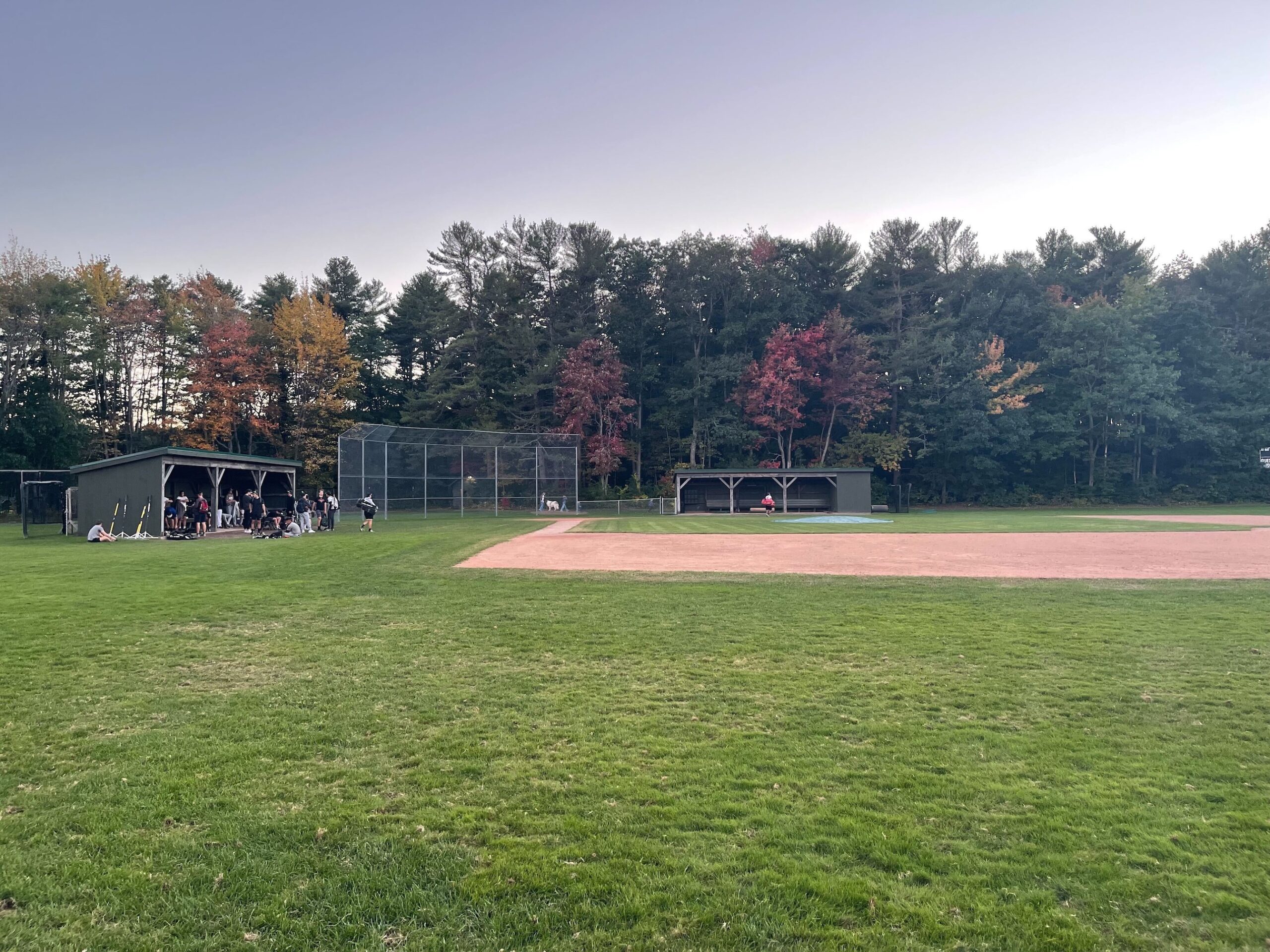Debate over Farley renovations rages on at town hall
September 30, 2022
 Lucas Dufalla
Lucas DufallaOn Tuesday, the College hosted a town hall on campus to update members of the Bowdoin and Brunswick communities on the planned renovations of the Pickard Field, as well as to allow them to express their concerns. Senior Vice President for Finance and Administration and Treasurer Matt Orlando and Ashmead White Director of Athletics Tim Ryan expanded on the plans presented to Brunswick town staff last week and gave further background on the reasoning behind the project, emphasizing the value that the renovations will provide to student athletes and to the College’s competitive edge.
“Student recruitment and retention is a competitive process,” Orlando said. “The College has continuously enhanced and made changes to facilities to keep pace with changes in higher education. This includes academic facilities, residential life and athletics. I prefer to be honest about that and upfront rather than pretend that competition is not part of the decision making that goes into all of this. Any facility that is a competitive liability for Bowdoin warrants our attention.”
In his opening remarks, Ryan gave an overview of athletics at Bowdoin and emphasized that the renovations will eventually benefit a significant portion of the student body.
“Thirty-six percent of students on campus participate in a varsity sport at Bowdoin,” Ryan said. “We have 31 varsity teams here. We have a number of students who participate in club and intramural athletic activity at the College as well. And when you include club and intramural activities, around 50 percent of students on campus are engaged in athletic activity in one way or another during the course of the year at the College. We believe this project will positively impact over 200 varsity athletes, over 200 club athletes and hundreds of intramural participants when the project is completed, which is really exciting.”
Ryan explained that the installation of turf fields and new lighting fixtures will allow teams much more flexibility in scheduling games and practices.
“The lighting will largely address the challenge of classes finishing at 4:15 and labs, which can finish at five o’clock, and daylight issues that we have in terms of scheduling,” Ryan said. “We’ll push the start time of games for soccer and baseball and softball to six or seven o’clock at night, as we’ve done for two decades on Ryan Field for field hockey.”
Members of the community expressed concerns about excessive noise later in the evening as a result of these schedule changes, as well as about the damage to the surrounding environment caused by the installation of turf and removal of trees.
In response to the removal of trees, Orlando explained that the current tree line impedes athletic activity.
“I can appreciate the argument that [trees] are not compatible with an athletic complex, but the removal of trees is not compatible with surrounding communities in terms of reduction in noise and light pollution, impacts in temperature, biodiversity, soil quality and water quality,” neighbor Eddie Kingman said. “I walk these fields every morning.”
Kingman said that, in his own estimate, the College’s plan would entail the removal of approximately 1000 trees. Orlando specified that as of yet, there is no exact count of trees to be removed, but that there remains the possibility of replanting in some areas.
A poster circulated among residents who live near the fields enumerates additional concerns, including potential damage to the Mare Brook Watershed.
“These changes will forever alter the nature of these special fields and affect dozens of homes that abut them,” the poster reads.
Many members of the audience requested more information about how exactly the changes will impact the local environment. Currently, the College—along with Sebago Technics, the company contracted for the renovations—is in the process of submitting its application to the Maine Department of Environmental Protection (DEP). Once this is submitted, assessments about potential environmental impacts will be publicly available.
The renovations will be considered at a town level at a meeting of the Brunswick Planning Board on October 11 at 7 p.m. This meeting will be open to the public.

Comments
Before submitting a comment, please review our comment policy. Some key points from the policy: